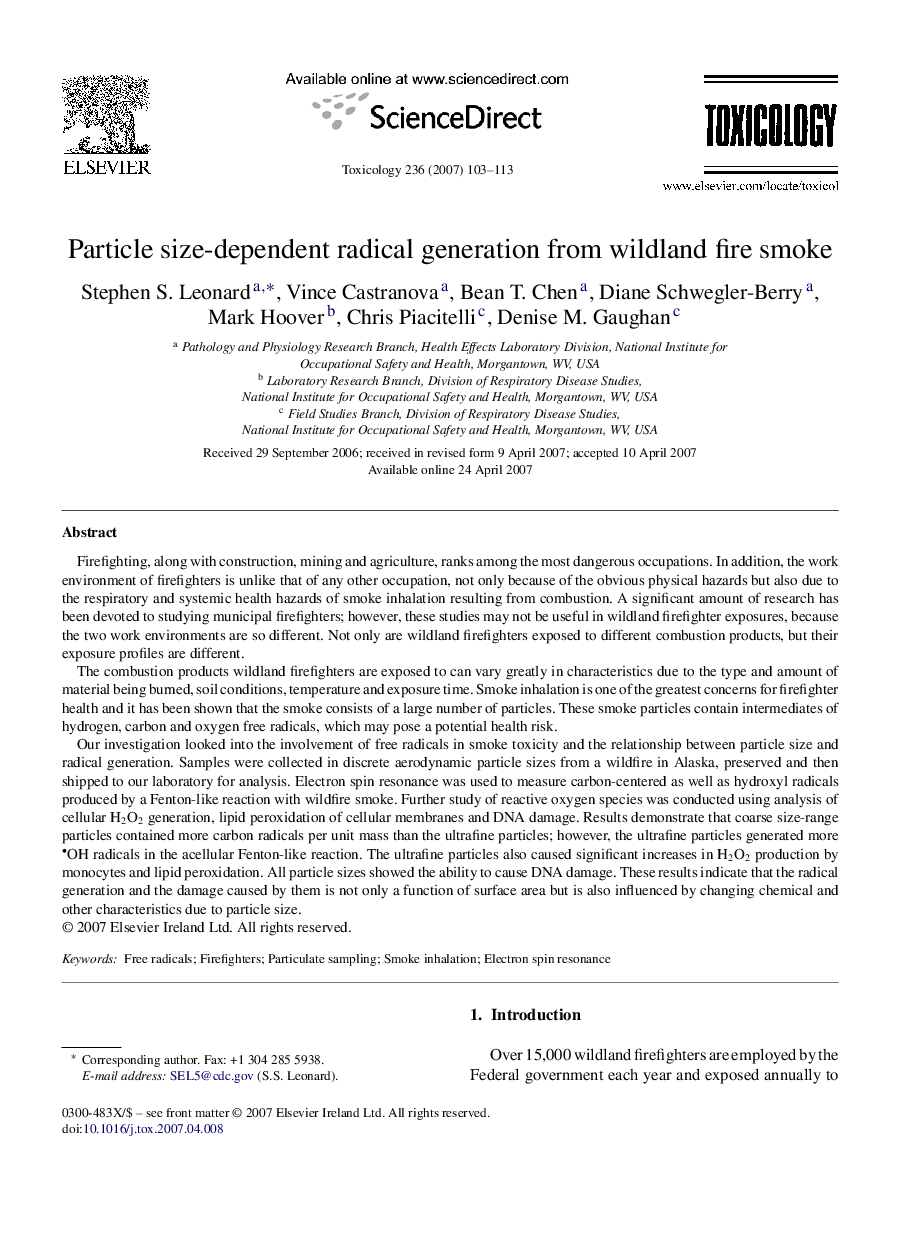| کد مقاله | کد نشریه | سال انتشار | مقاله انگلیسی | نسخه تمام متن |
|---|---|---|---|---|
| 2597464 | 1562420 | 2007 | 11 صفحه PDF | دانلود رایگان |

Firefighting, along with construction, mining and agriculture, ranks among the most dangerous occupations. In addition, the work environment of firefighters is unlike that of any other occupation, not only because of the obvious physical hazards but also due to the respiratory and systemic health hazards of smoke inhalation resulting from combustion. A significant amount of research has been devoted to studying municipal firefighters; however, these studies may not be useful in wildland firefighter exposures, because the two work environments are so different. Not only are wildland firefighters exposed to different combustion products, but their exposure profiles are different.The combustion products wildland firefighters are exposed to can vary greatly in characteristics due to the type and amount of material being burned, soil conditions, temperature and exposure time. Smoke inhalation is one of the greatest concerns for firefighter health and it has been shown that the smoke consists of a large number of particles. These smoke particles contain intermediates of hydrogen, carbon and oxygen free radicals, which may pose a potential health risk.Our investigation looked into the involvement of free radicals in smoke toxicity and the relationship between particle size and radical generation. Samples were collected in discrete aerodynamic particle sizes from a wildfire in Alaska, preserved and then shipped to our laboratory for analysis. Electron spin resonance was used to measure carbon-centered as well as hydroxyl radicals produced by a Fenton-like reaction with wildfire smoke. Further study of reactive oxygen species was conducted using analysis of cellular H2O2 generation, lipid peroxidation of cellular membranes and DNA damage. Results demonstrate that coarse size-range particles contained more carbon radicals per unit mass than the ultrafine particles; however, the ultrafine particles generated more OH radicals in the acellular Fenton-like reaction. The ultrafine particles also caused significant increases in H2O2 production by monocytes and lipid peroxidation. All particle sizes showed the ability to cause DNA damage. These results indicate that the radical generation and the damage caused by them is not only a function of surface area but is also influenced by changing chemical and other characteristics due to particle size.
Journal: Toxicology - Volume 236, Issues 1–2, 1 July 2007, Pages 103–113